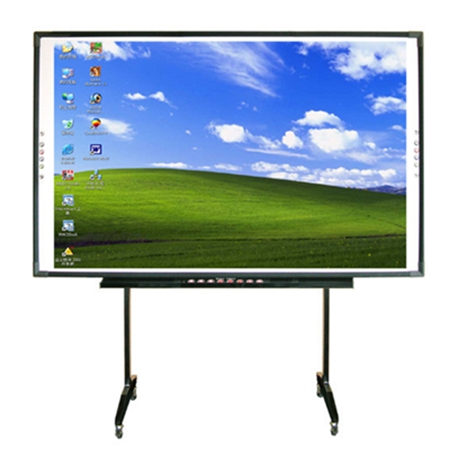Essentially, all screen based input systems turn user input into screen
coordinates. This has been true since the earliest light-pen devices in the
1960s. Of course, today's IWBs are much more sophisticated. Here are the
different options you can choose from:
Resistive Membrane Whiteboard
The whiteboard surface is made of two parallel sheets of flexible soft material.
They are resistive to electricity. When pressure is applied to the surface, it
causes the two sheets to come together, interrupting an electrical circuit at
the point of contact. The board can send exact coordinate data to the computer.
Because the screen is pressure sensitive, you can use a finger or a stylus. The
downside is that the soft material can be scratched or damaged more easily than
a hard surface.
Electromagnetic Whiteboard
The outside of the interactive whiteboard looks very similar to a normal
whiteboard. Inside the board, there is a grid of electrical cables, which
produces an electromagnetic field. When a special stylus is used on the board,
the grid detects interference from the pen. The pen produces its own magnetic
field with an internal coil. The hardware in the board can produce a very
accurate x-y coordinate pair for the pen's position, and feeds this data to the
computer.
Laser Scanner Whiteboard
The frame of the board contains an array of invisible lasers - just like
the alarm systems in spy movies. When an object breaks a beam, the board can
detect where it is. A special reflective stylus is used with the board as an
input device.
Infrared Optical Whiteboard
This is similar in concept to the laser scanner board, but it uses an
infrared detector instead. The screen can be made from any material, as the
material is not a factor in the sensor technology.
Capacitive Whiteboard
This type of device uses a sensor system that is very similar to the screen
on a smartphone or tablet. It responds to the static electrical charge inside
the human body, so it can sense fingers without relying on pressure sensors.
That means the board can be tough and resilient.
Ultrasonic Whiteboard
Ultrasonic equipment may conjure up images of medical scanners, but it's
actually a very effective sensor technology for whiteboards. The transmitters
emit an inaudible sound wave from the corners of the board. The waves interact
with tiny grooves on the board surface to set up a complex pattern of standing
waves. When an object interferes with this pattern, the detectors can calculate
the position. They work with fingers or a stylus.
Digital Whiteboard
These devices have a special pattern of dots embedded into the surface of
the board. The stylus has a tiny infrared camera in the tip, which can detect
these dots and use the information to track the position with a high degree of
accuracy. This input method is the most similar to the early light pens, but it
is much more accurate.
There are lots of different options to choose from, and more on the way.
Understanding what your requirements will help you make the right choice.
Consider how you will be using the IWB in your class or office, and choose an
appropriate technology.
